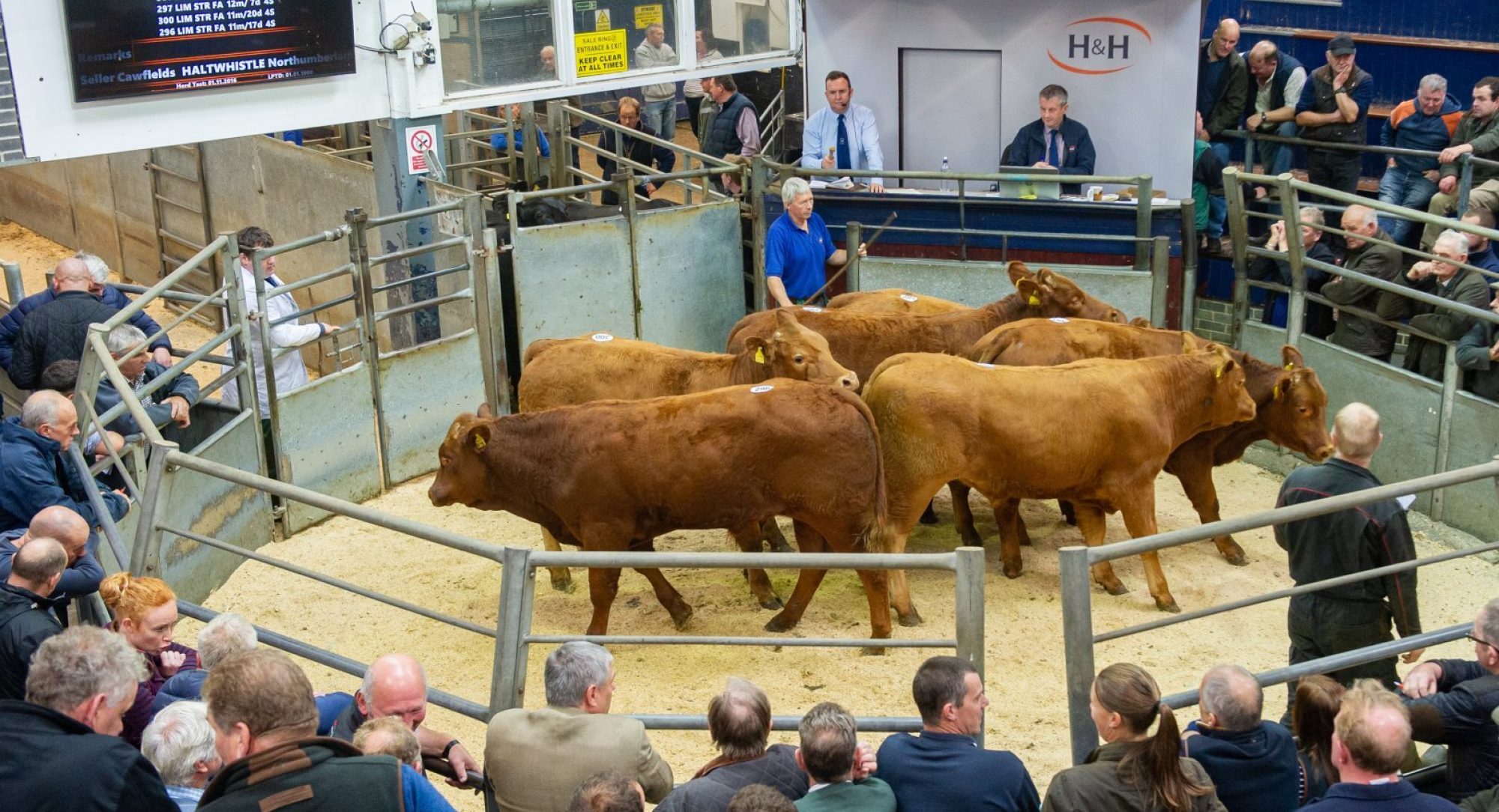Trade for prime cattle, stores and cast cows has been flying through the livestock markets of England and Wales in the first part of 2023, following a bumper year in 2022, auctioneers across the country are reporting.
The trade for store cattle has been exceptional, according to Bradley Towell of Frome Livestock Market. “Up to the end of March we have sold 9,029 head of store cattle and reared calves at Frome, an increase of 2,824 for the same period last year,” he says.
“This can be put down to a combination of factors including a strong trade, late spring, fodder shortage and a resurgence in vendors having confidence in the auction system over private farm to farm sales.”
Difficult to value without competition
According to Mr Towell the returns being achieved for store cattle in auction marts across the country make it extremely difficult to value store cattle on the farm without introducing competition.
The auction system also has the added benefit of attracting different customers for different weights and grades of cattle, meaning individual buyers will bid more for what they want.
“Competition for stronger, shorter-term feeding stores is fuelled by the record high finished beef price, also reflected in the trade for medium-term stores. Suckler-bred store cattle are in short supply nationally which is resulting in some fantastic record prices being achieved,” he says.
Alastair Sneddon of Bagshaws has seen a similar picture through the store cattle ring at Bakewell Market, stating “We have been up to our market capacity on a number of occasions this spring.
“There has been no shortage with a good supply, but the prices have remained just as firm. The demand has continued to outstrip that supply,” he adds.
Ahead of the best deadweight price
Auctioneers are also reporting that trade for prime beef is the highest it has ever been, evident by the returns achieved in livestock marts across the country.
“The demand for top quality suckler bred prime cattle in our auction rings in Carlisle is being driven first and foremost by family wholesale meat businesses and butchers,” says Scott Donaldson of H&H.
“With values beginning to break the £3/kg barrier some months ago, the best are now frequently £3.30 - £3.40/kg in our live rings, pushing the top prices for heavy cattle in excess of £2500 per head.
“Quality cattle of this kind are not in abundance and with the best finished sorts killing out above 60% in a wholesaler’s abattoir, with minimal trim compared to the major processors, these cattle still work out well over 30p/kg ahead of the best deadweight price on offer,” he adds.
Willing to bid more
Mr Towell agrees, stating the top-grade prime cattle have been achieving strong prices for some time, but it is the standard quality and also-rans that look the dearest, he claims.
“We operate a ‘green market’ on a Wednesday which, in addition to abattoir buyers, allows customers to buy cattle in the prime ring to feed. This is a huge advantage as it underpins the value and increases the number of buyers and therefore increases competition,” he says
“As with the prime cattle, the plainer grade 3 and 4 cows look the dearest as there are buyers looking to source cows to feed out of a green market,” he adds.
“It is unbelievable what some of the plainer cows are making in the live ring week after week. This reinforces the principle that there is a massive benefit to selling cows liveweight, as there is competition for different grades from buyers willing to bid more for the grade that will best suit their job.”
Demand for processing and manufacturing meat
Mr Donaldson adds, “The other issues that have plagued our industry such as weight and age limits appear to have gone out the window. Neither age nor weight matter, with the incredible demand for processing and manufacturing meat, the cull cow ring has experienced the same phenomenon as the prime cattle ring.”
Loyal deadweight suppliers are reaping the rewards by returning to the live ring, according to Mr Donaldson.
“A recent consignor to the cull cow ring in Carlisle with 20 suckler cows averaging 750kgs, returned a gross average of £1700 per head. That is £150 per head better than the deadweight alternative, with no deductions for being over fat.
“The same consignor, with an identical batch in October 2022 averaged £260 less, proving how much the trade has improved in six months, manly driven by the demand in the live ring. We have now had cows and cast bulls break the £3000/ head barrier on a number of occasions,” he adds.
Chris Dodds, executive secretary of the Livestock Auctioneers’ Association comments, “Our 2022 throughput figures revealed an overall turnover of £2.1 billion across all categories in England and Wales.
“This reflects the trend we have seen of producers returning to the live sales ring, but also the fact that the auction system is attracting multiple potential buyers. This is providing the opportunity for beef producers to market their stock to its full value, based on current demand,” he concludes.
